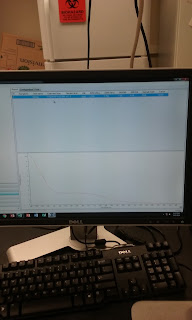Seeing that bacteria make a large portion of the total population on Earth, there has been thousands of research in the last century to observe and record these organisms. Only in the last few decades have scientist made the discovery that there is an estimate of five million trillion trillion bacteria in the world (Schloss & Handelsman 2004). A key part over why the knowledge of bacteria is important is that bacteria were among the first life on Earth. The oldest life form on Earth were prokaryotes and cyanobacteria, single celled bacteria, that were responsible for creating Earth’s first supply of oxygen 2.5 billion years ago (Hollar 2012). Since then, bacteria have played an important role in Earth’s ecosystem ranging from creating acids necessary food production, causing diseases, or spreading genetic information to one another.
Bacteria exist everywhere, even inside the human body. If the information on their total number was not alarming enough, it is stated that the cells in the human body are roughly ninety percent bacteria while ten percent is actually human cells (National Institutes of Health 2012). Despite the human cells being larger than the bacteria, bacteria greatly outnumbered them since they are tiny and can be compacted into smaller areas.
Like all other living cells, bacteria information is carried by DNA. DNA is essentially the building blocks of the bacteria and all other living organisms. Prokaryotic, bacteria, differ from Eukaryotic, all other life forms, is that all of bacteria genetic information is stored in one chromosome that are exactly copied by their mRNAs, an enzyme in charge of creating protein from DNA (Rogers). This genetic information is vital for information regarding the likelihood of the bacteria causing disease, transmitting from to host, or even adapting to antibacterial medicine. Although bacteria can use binary fission to create offspring, sexual reproduction equipped new generations of bacteria with features that will help them survive in areas the previous generations could not (Rogers).
Studying genomes remain crucial for the advancement of society. The foundation of genetic engineering is to modify microorganism is to produce products that would not be produce in nature, such as antibiotics, drugs, or nutrients (Maczulak). Rearranging the amino acids in the DNA sequence inside bacteria is how scientists created artificial insulin for diabetic patients. The components extracted from bacterial genes can be used by biologists to identify the pathogens responsible for biological warfare (Hoyle). The data found within the genes determines the ability of the pathogen to cause such destruction and holds the potential needed for researchers to find vaccines or antibiotics to combat these organisms. The first step to accomplish this feat is to first identify the components of the bacteria by extracting genetic information from the source.
In this experiment, extractions of several bacteria were used to determine the effectiveness of each procedure. Different strains of bacteria were collected to determine the purity and the amount of bacterial DNA yield by each result. This research will help to determine the proper test to use when gathering genetic information on microorganisms. With this in mind, scientist can use pure samples of DNA to test other factors for bacteria.

No comments:
Post a Comment